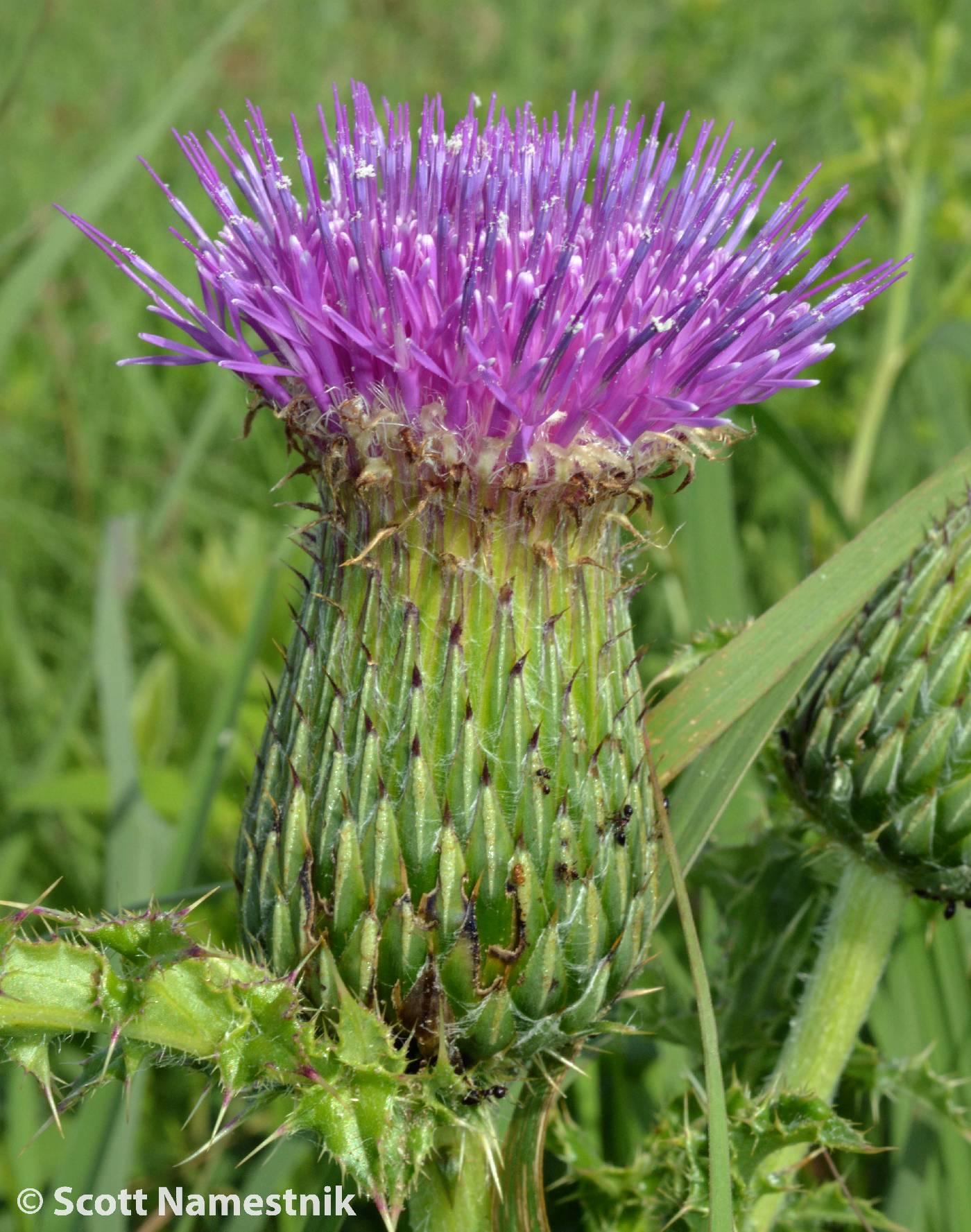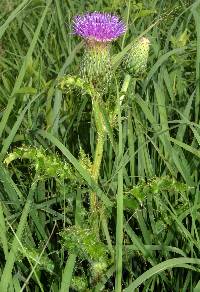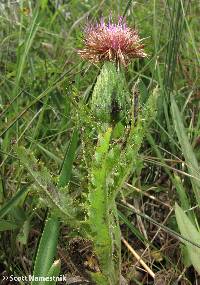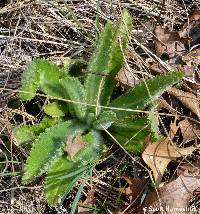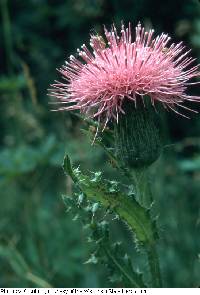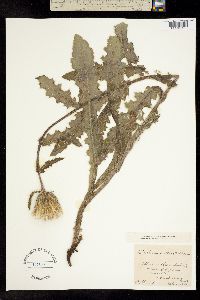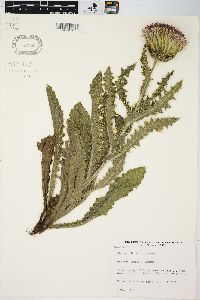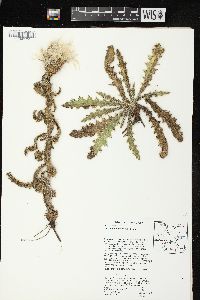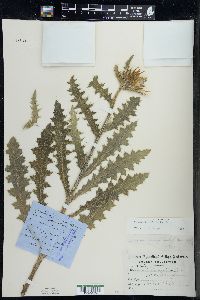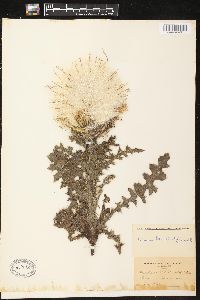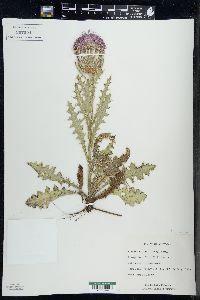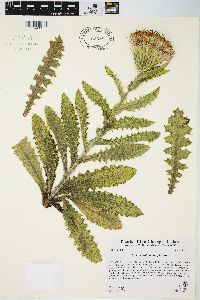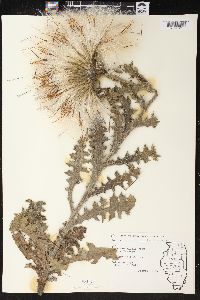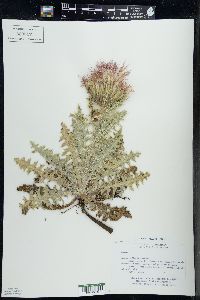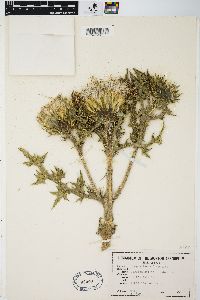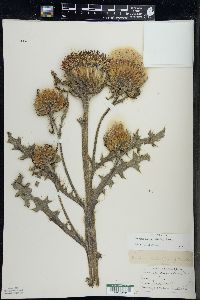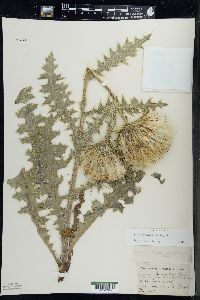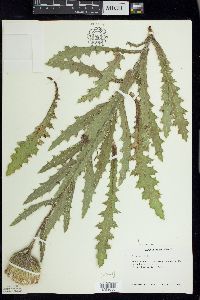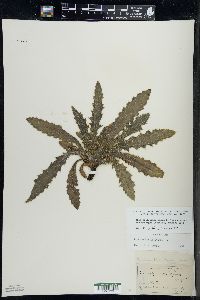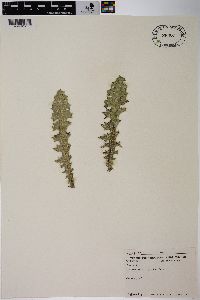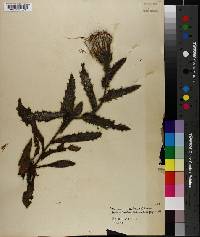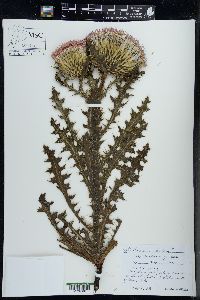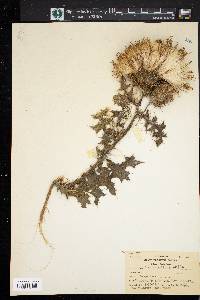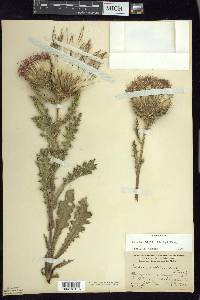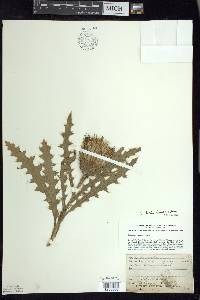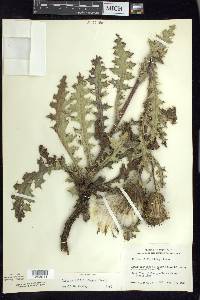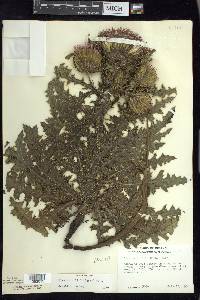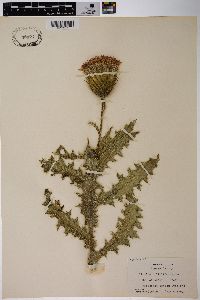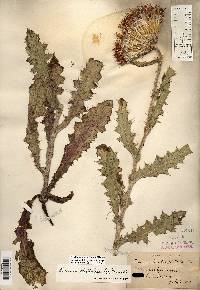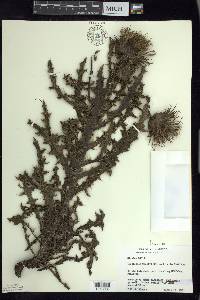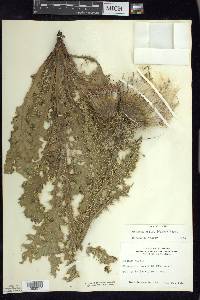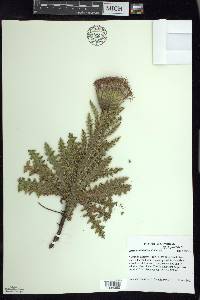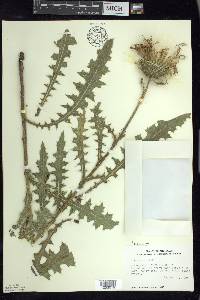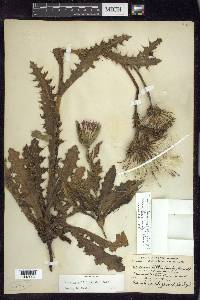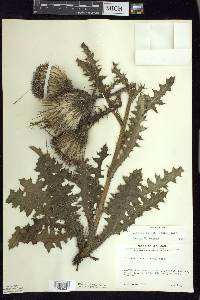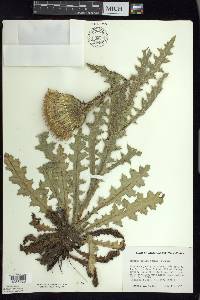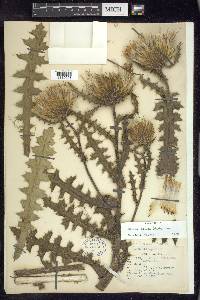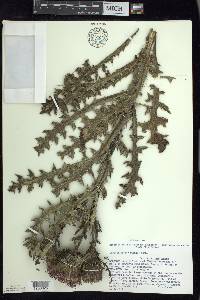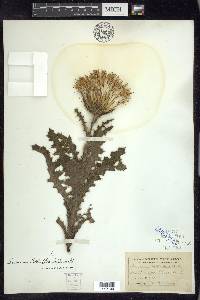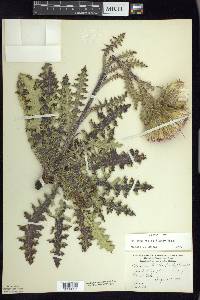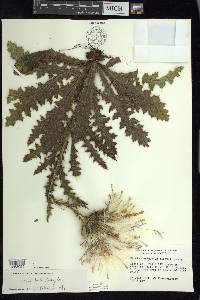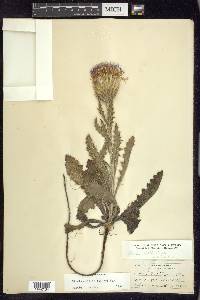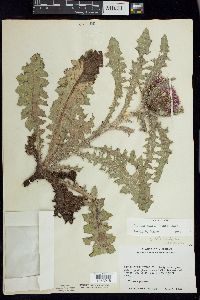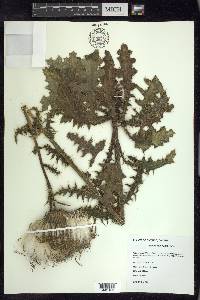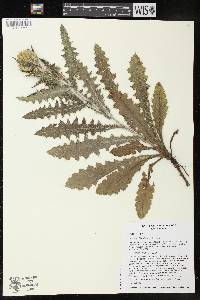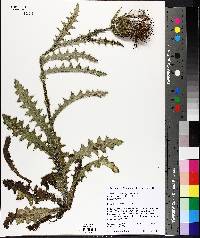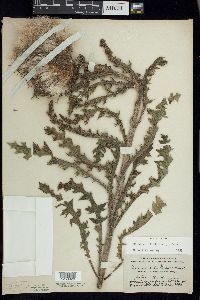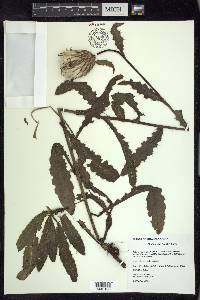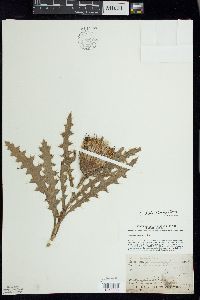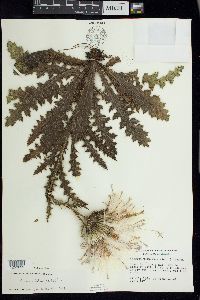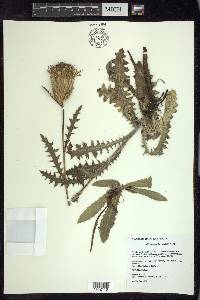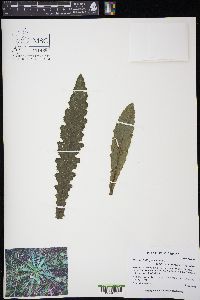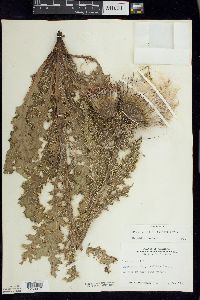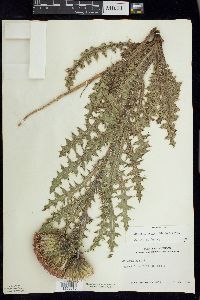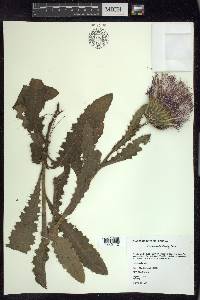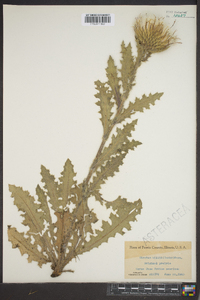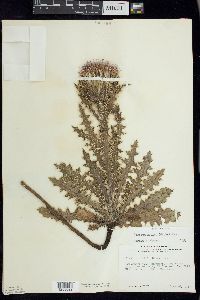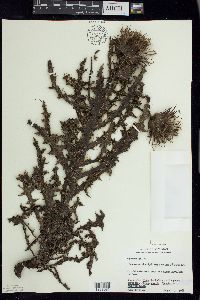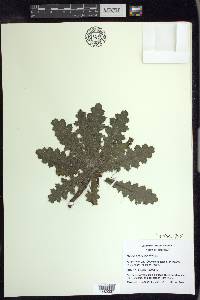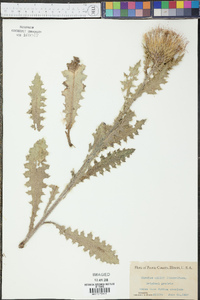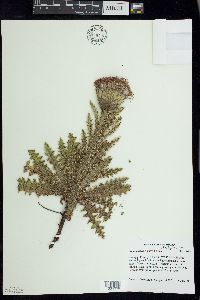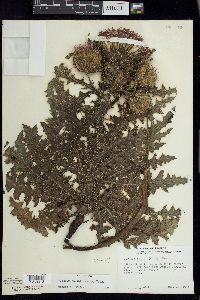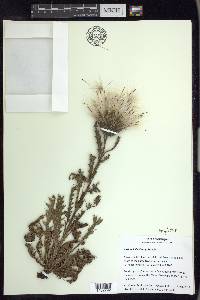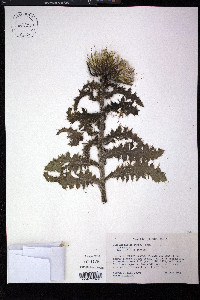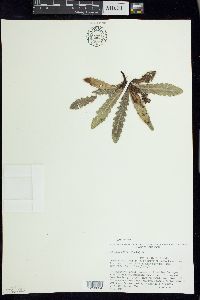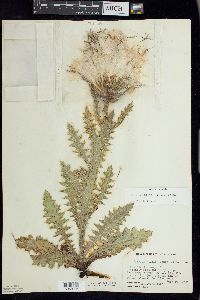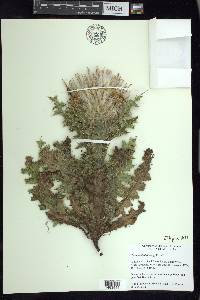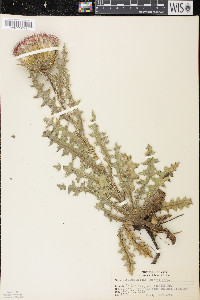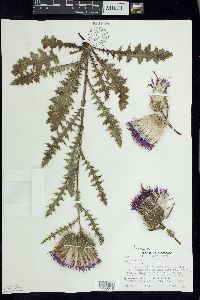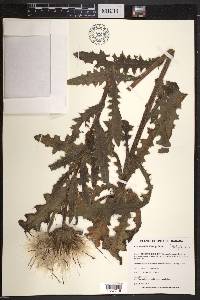Cirsium hillii
|
|
|
|
Family: Asteraceae
Hill's Thistle
|
Perennial herb 25 - 60 cm tall Stem: relatively delicate, unbranched, and lacking spiny wings. Fruit: of numerous, small achenes, one from each flower. Basal leaves: in a rosette, persistent, large (12 - 25 cm long, 2 - 7 cm wide), wavy-lobed, with reddish midveins, and numerous, short spines along the edges, with scattered larger spines intermixed. Stem leaves: alternate, green beneath, similar in shape to basal leaves, but a bit smaller. Roots: stout, elongate, thick, and hollow. Flower heads: few, large, with the involucre about 3.5 - 7 cm wide and more than 3.5 cm tall. Spines on the outer series of bracts (phyllaries) 1.5 - 3.5 mm long, and erect. Individual flowers: rich rose-purple. Similar species: Cirsium hillii is probably most similar to C. muticum and C. arvense, but both of those species normally have more than five flowering heads, which are less than 3 cm broad, less than 3.5 cm high, and the spines on the phyllaries are less than 1 mm long. However, when flowers are not present these three species can often be confused. Our other pinkish flowered thistles do not have as large or as few flowering heads, the stems have spiny wings, and the underside of the leaves often are not green. Flowering: June to August Habitat and ecology: Dry prairies and other open places, often in sandy soil, but rare in the Chicago Region. Occurence in the Chicago region: native Notes: The original collection of C. hillii was from a Chicago Region locale, Pine Station (now part of Gary) in Lake County, Indiana. Reverend Ellsworth J. Hill, a common Chicago area collector near the end of the nineteenth century and beginning of the twentieth century, collected this plant in 1890, and it was named for him. This specimen, called a type specimen, is deposited in the herbarium at the New York Botanical Garden and is available for viewing online. Many current authorities believe this taxon is not a separate species from the eastern C. pumilum, under which it has been placed as either a subspecies or variety, still retaining the epithet hillii. Today, the continued existence of C. hillii is under threat from habitat loss. Fire suppression is also thought to have severely diminished populations of this species since it requires open bare soil for seedlings to develop. Etymology: Cirsium comes from both the Greek words kirsion, meaning a kind of thistle, and cirsos, meaning "swollen vein", for which thistles were once thought a remedy. Hillii is named after Rev. E. J. Hill (1833 - 1917), a respected botanist who first collected this plant in 1890. Author: The Field Museum Much like no. 4 [Cirsium pumilum (Nutt.) Spreng], but perennial with long, thickened roots, these traversed longitudinally by several cavities; glutinous dorsal ridge of the invol bracts avg larger and better developed; achenes mostly 4-5 mm; 2n=30. Prairies and other open places, often in sandy soil; s. Ont. to Pa., w. to Minn. and S.D. June-Aug. Gleason, Henry A. & Cronquist, Arthur J. 1991. Manual of vascular plants of northeastern United States and adjacent Canada. lxxv + 910 pp. ©The New York Botanical Garden. All rights reserved. Used by permission. |

